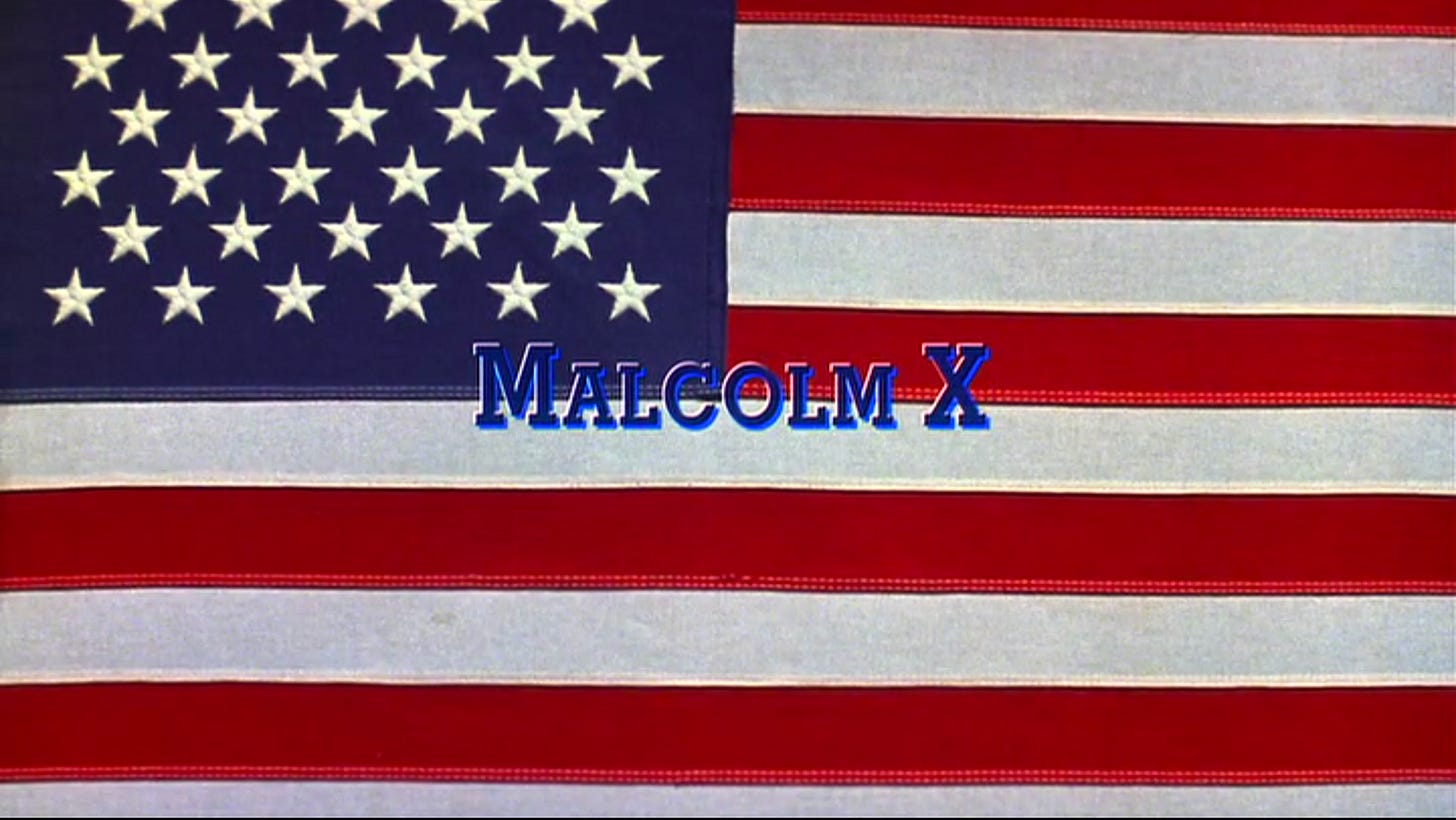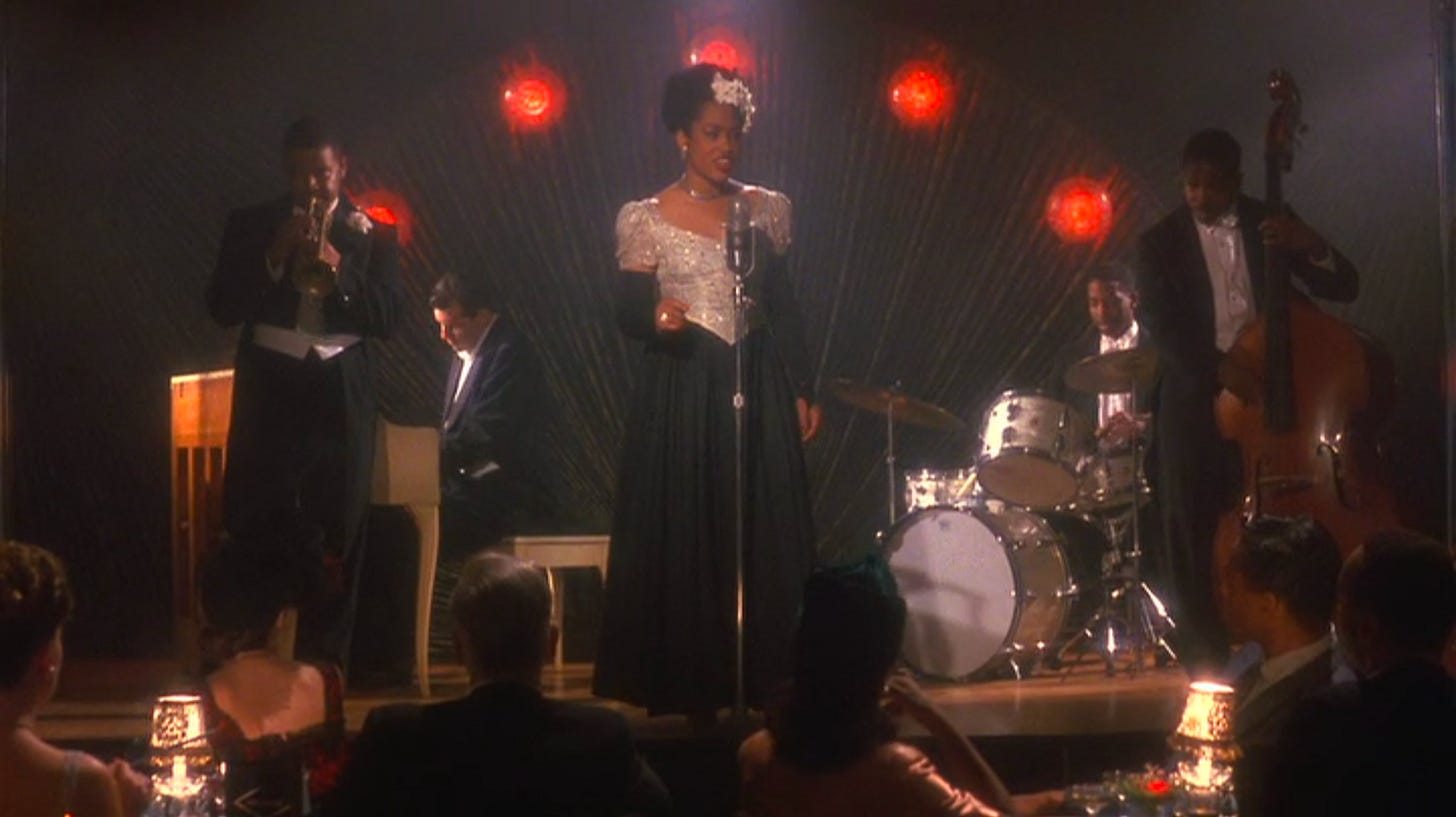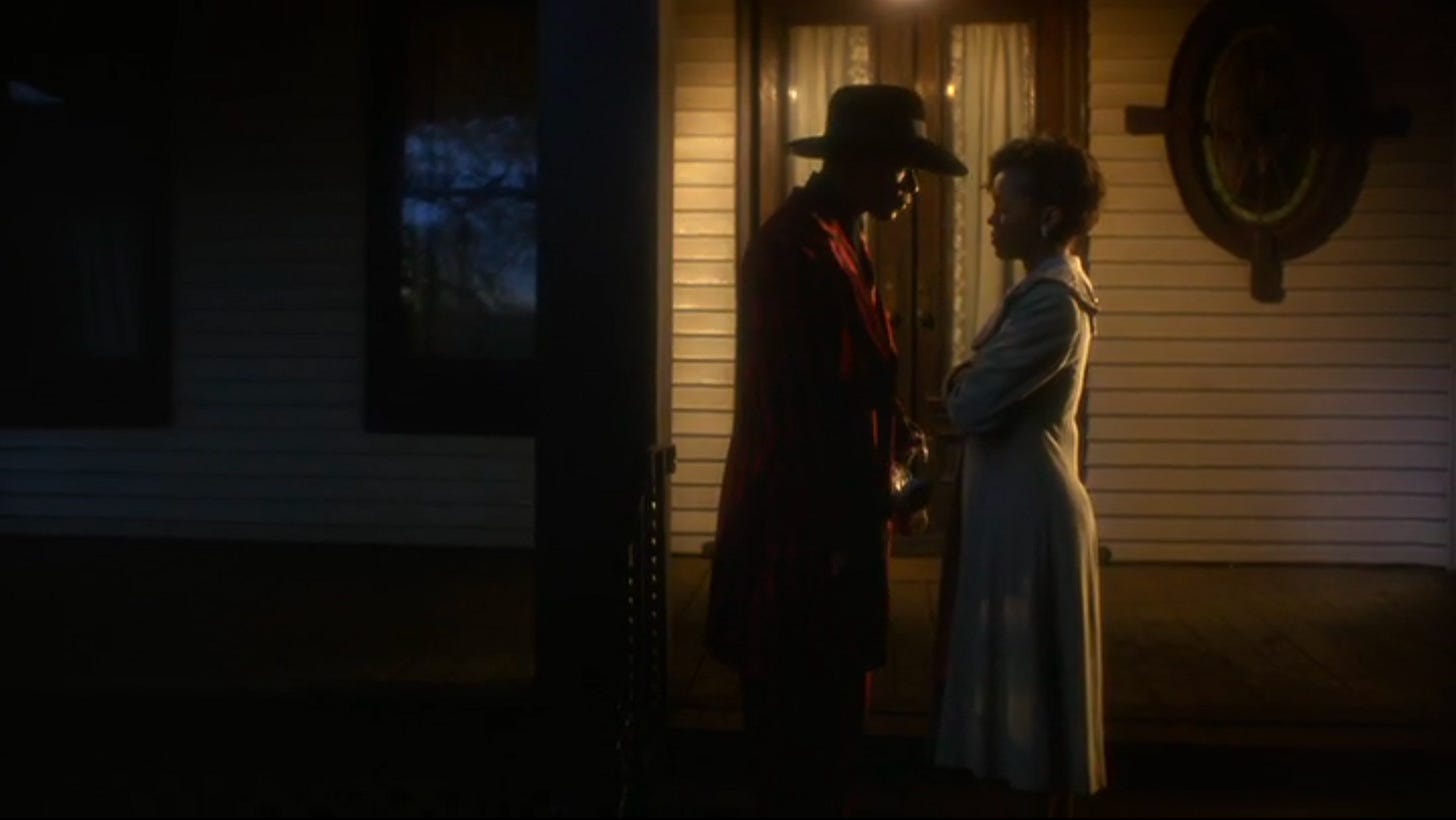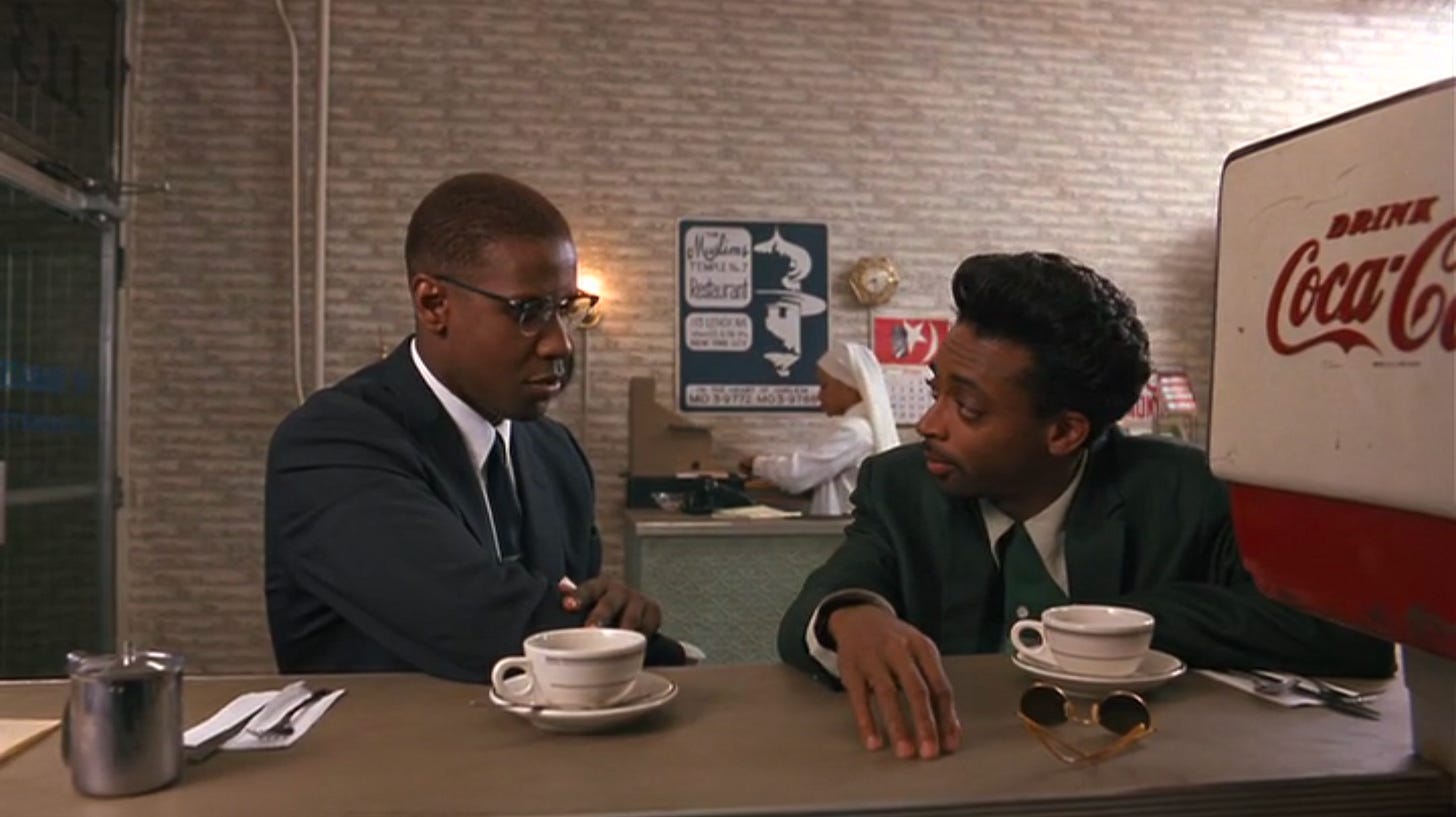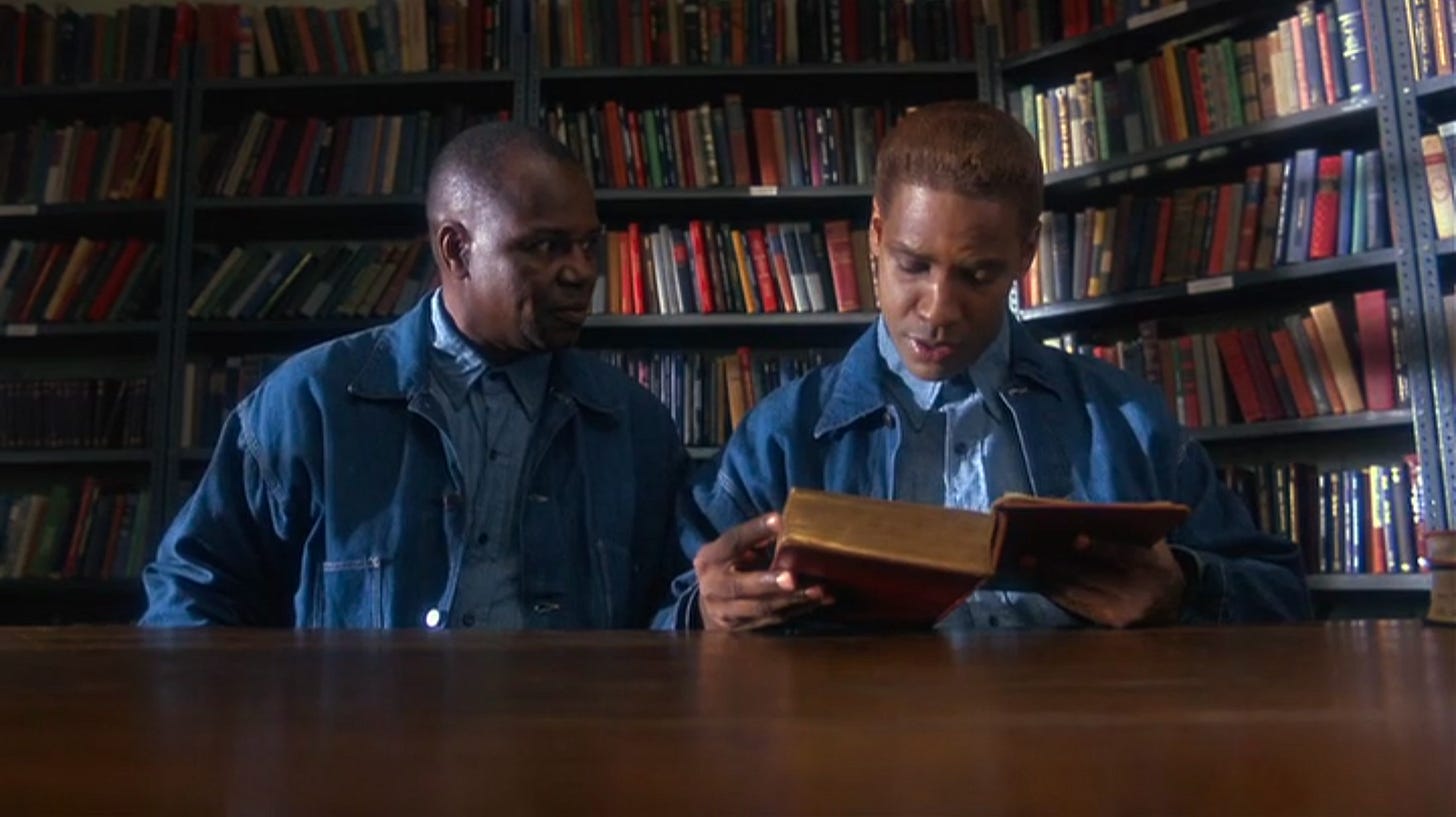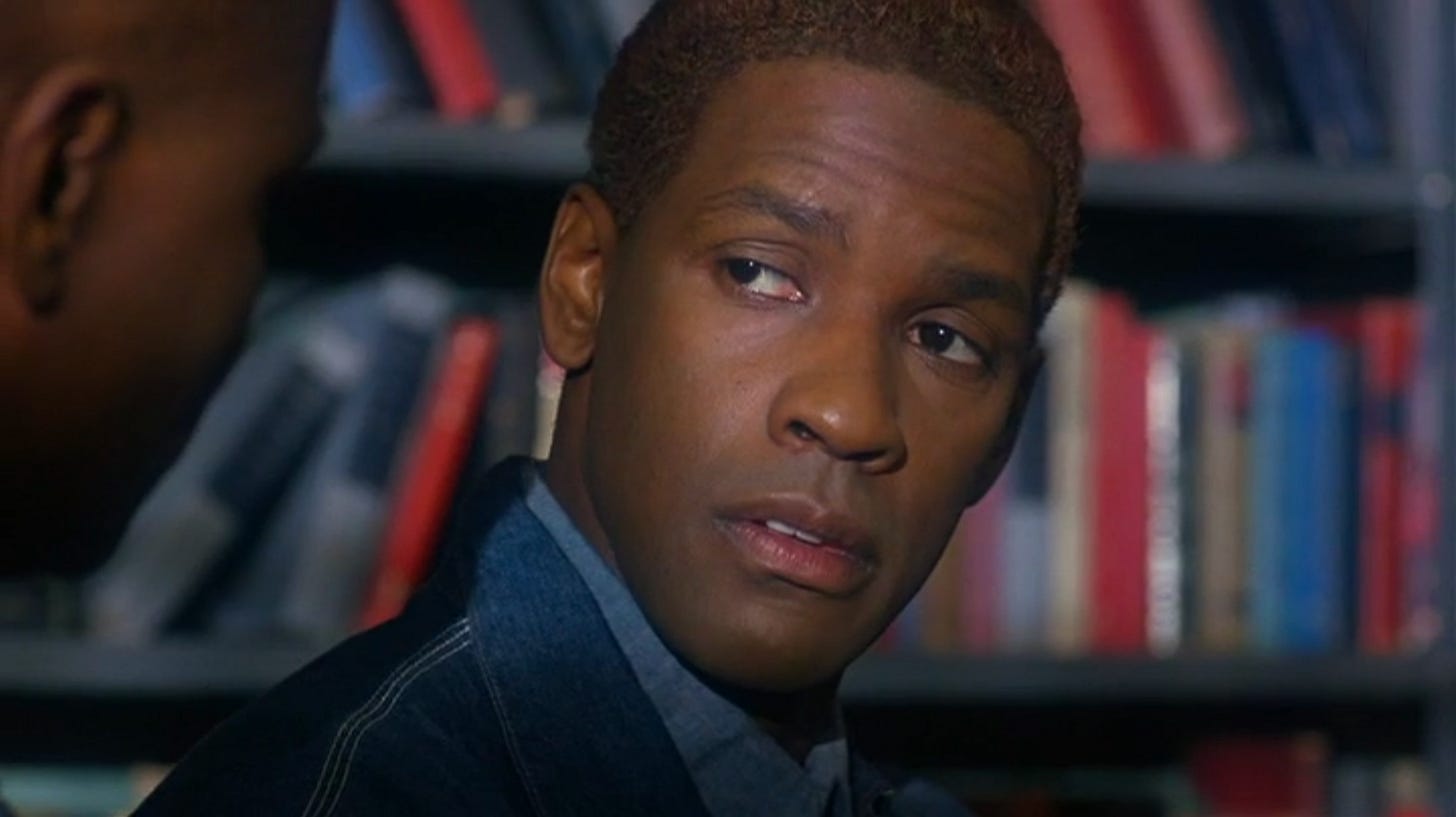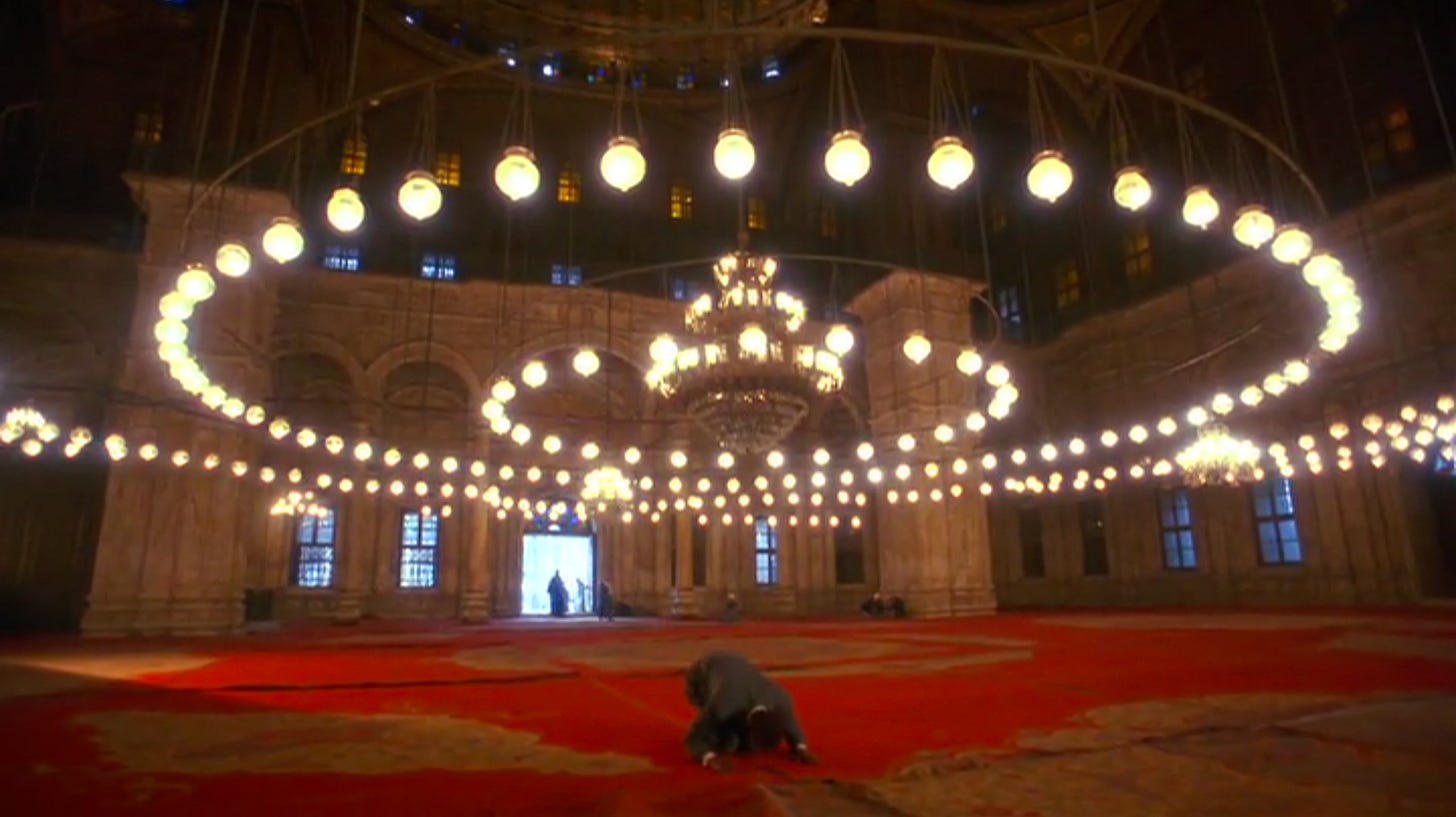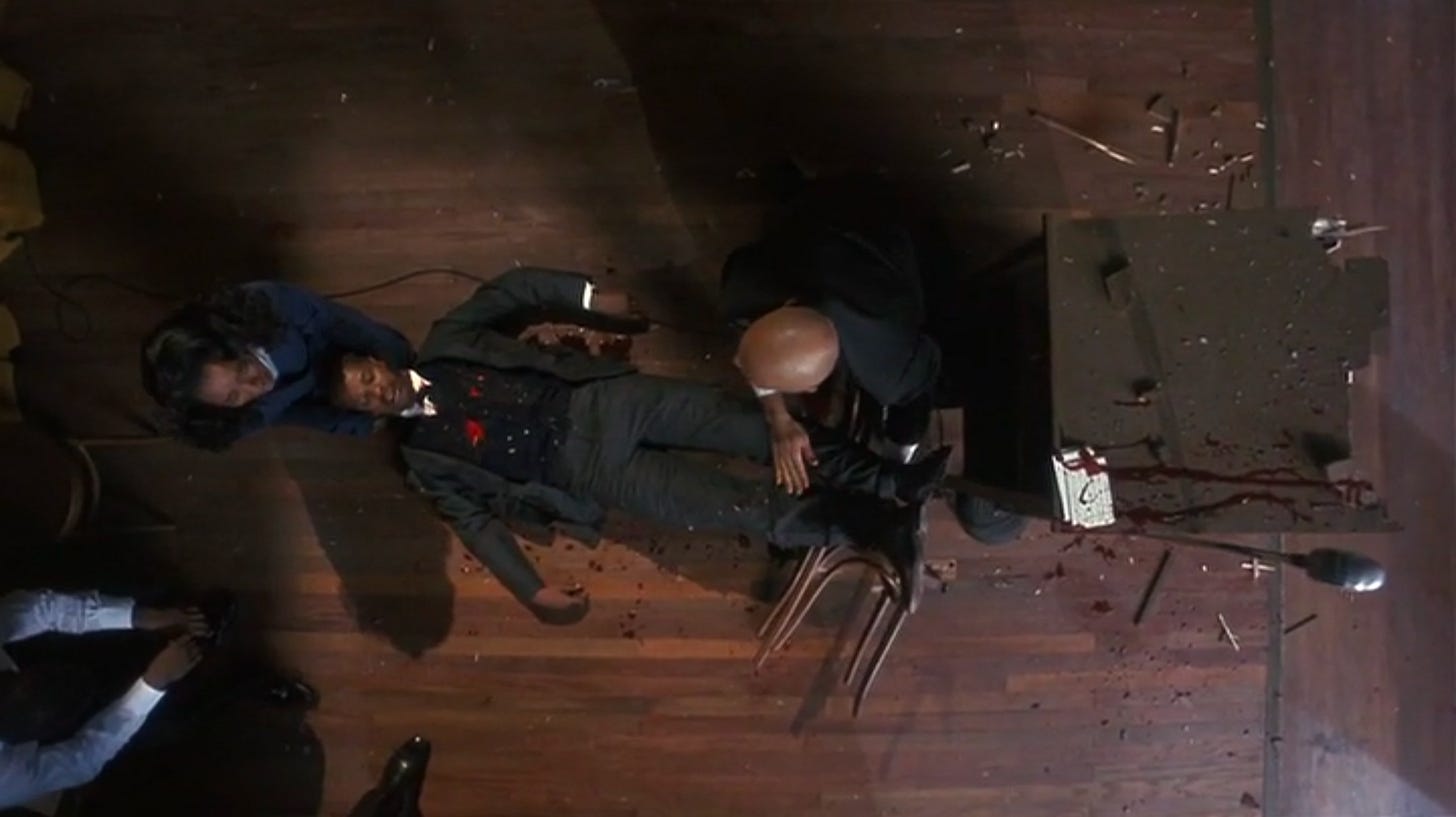Biopics aren’t often subtle, and Spike Lee’s Malcolm X fully intends to hammer, hammer, jackhammer home the culpability of America in a modern tragedy.
To that end, he uses colours boldly in everything from lighting, to set dressing, to wardrobe, and of course the title card:
Lee uses color differently at different stages of Malcolm’s life, a strong theory running through the film everywhere from lighting to wardrobe and sets.
American flag colors of red-white-and-blue are everywhere the first ninety minutes, including working small pops of red into a prison which is otherwise blues and grey. As Malcolm converts in prison, red falls away in favour of blues and greens. In the sections covering Malcolm's preaching, hajj, and struggles with his Muslim brothers, the colours are mostly black and green with red accents. Finally, the flag coloured motif comes back for the assassination.
Lighting
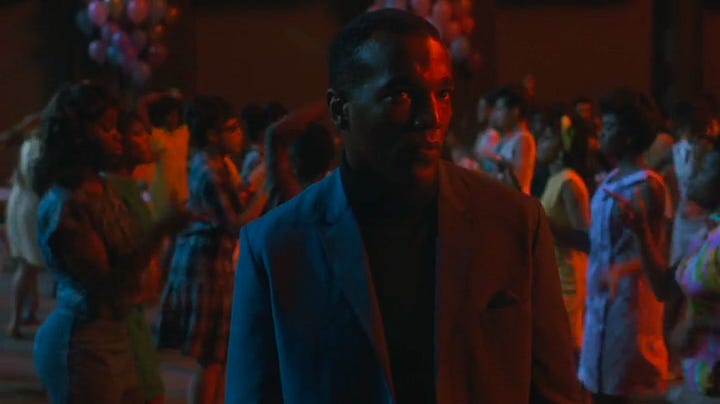

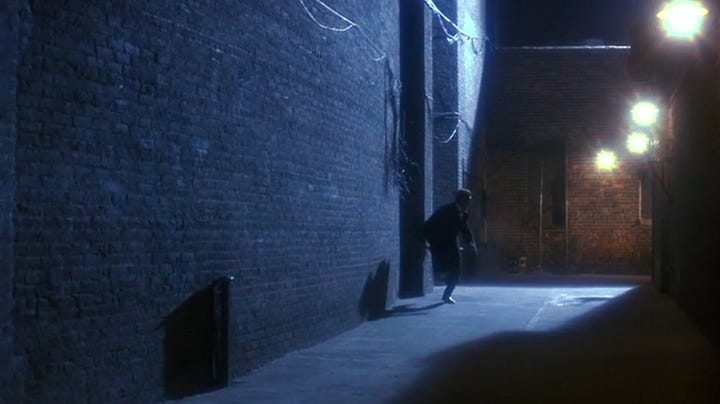
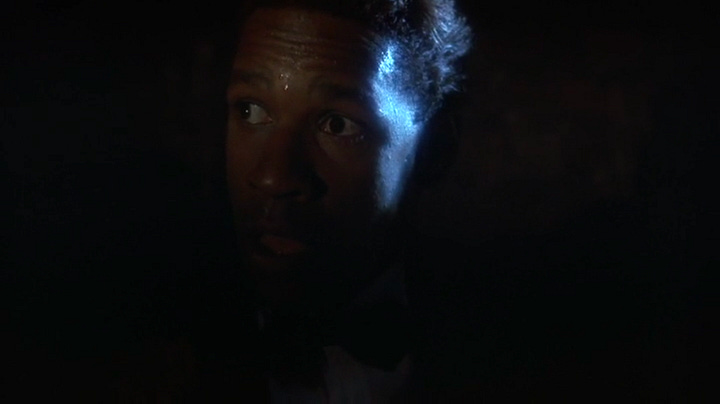
Speaking of flags, the blue lefthand side of frame paired with white clapboard lines vaguely approximates the flag; putting it all behind Denzel in a bright red zoot suit finishes the look.
Wardrobe / Props
Malcolm wears red and white, while his girlfriend Sophia is in blue.
The blueish table with white cocaine against a red carpet adds to the effect.
The red of the car and blue of Shorty’s suit are accentuated by the stark white lighting. Next, Malcolm shows up in red pants and white tank top, the blue handily provided by Rudy’s dress shirt.


Sets / Location
What’s more American than a red and white Coke machine?
In Prison
Other than a knit cap here or flash of brick there, there’s not much opportunity for red. But when Malcolm and Bains talk in the prison library, the set makes beautiful use of books to provide the effect of the flag’s red stripes behind them.
Foreshadowing
By this point in the film, ‘red white and blue’ has been replaced by black, white, and hints of red and green.
But these two shots, near the end of the film, are less about that colour theory and more about history; the viewer knows what happened to Malcolm X, so the carpets of red foreshadow the bloodshed we know is coming.

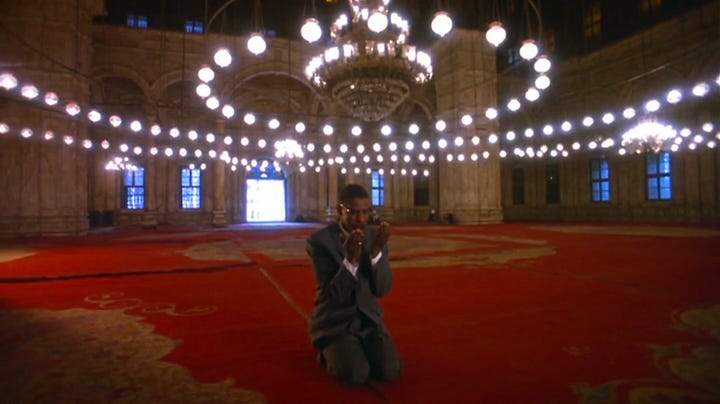
Full Circle
In Malcolm X’s final moments, the film brings back imagery showing America as the ultimate cause of his demise, with red white and blue appearing through the shots via props, set dressing, wardrobe, and blood.
Takeaways
The film’s colour also helps guide us through the chronology; the first hour reveals Malcolm's life events more in emotional order than chronological OR pure flashback, intercutting and memory-blinking around.
All departments must collaborate to get this right, especially DP Ernest Dickerson, iconic wardrobe designer Ruth Carter, production designer Wynn Thomas, art director Ted Glass, and set decorator Tom Warren.
Transitioning from one scene to another is often helped with stark colour contrast, especially if that scene is only one or two shots before returning to a different shot in the ‘present’ — but a more thorough exploration of that would require its own post.

